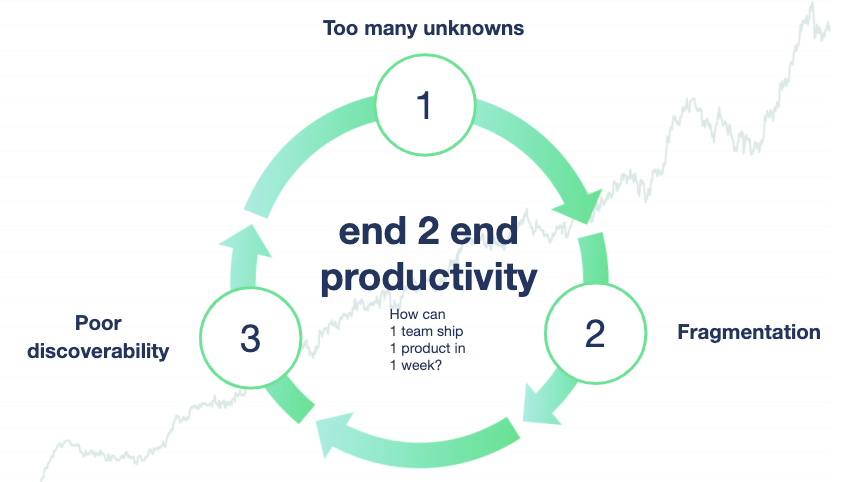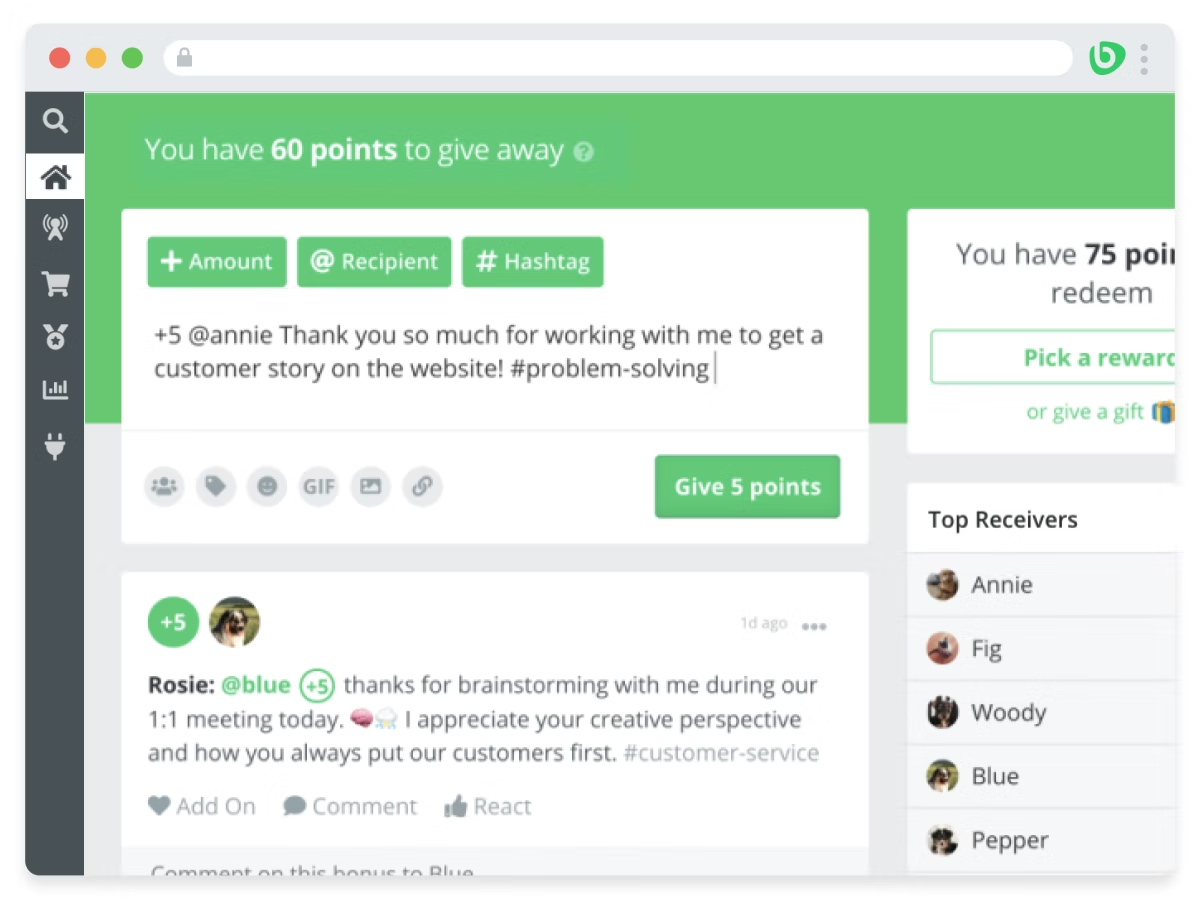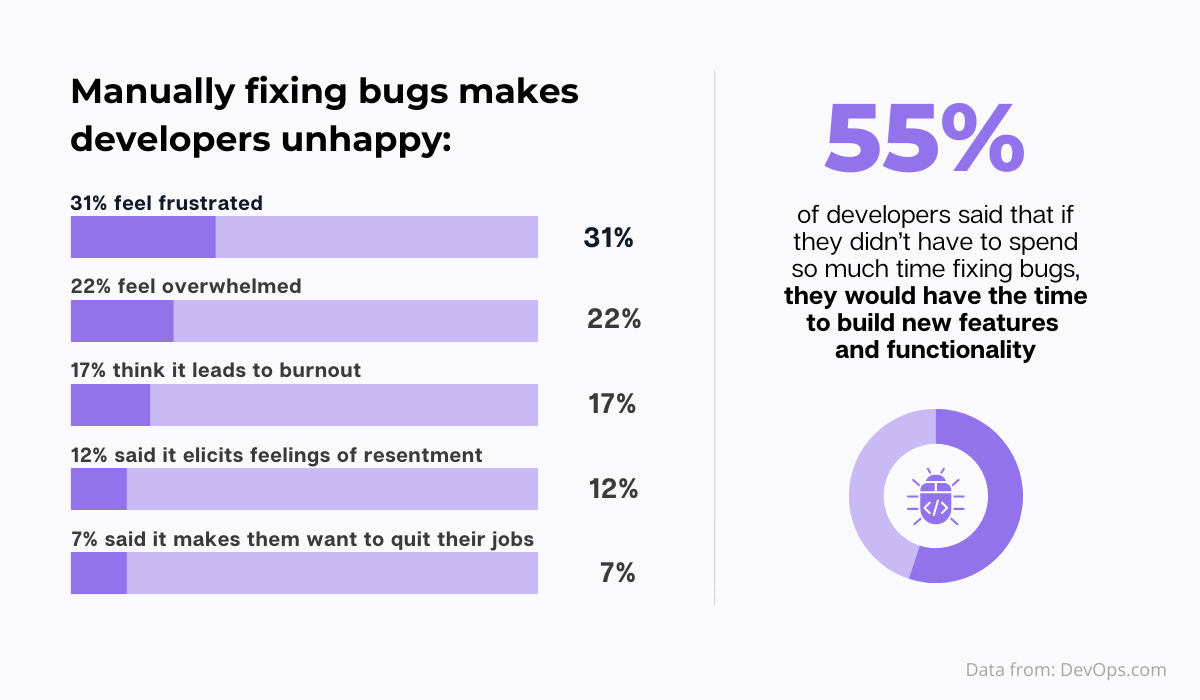
It’s no secret that developers are the backbone of any business.
They are the ones who come up with ideas, build them, and make them a reality.
Therefore, if you want your agency to achieve success, it’s important that you give them a good developer experience.
That’s because a good experience translates into happier developers, who will be more productive and deliver better outcomes.
In this article, we’ll discuss some of the biggest reasons to provide a great developer experience for all your team members and give you some practical tips on how to do so.
Stay tuned!
Table of Contents
Increased developer productivity
One of the biggest reasons why having a good developer experience is important is increased productivity.
It’s easy to fall into the trap of thinking that developers should just be able to get on with their jobs, but it’s important to remember that they need the right tools in order to do so.
Why? Because, when properly supported, they can focus on the task at hand without having to think about whether their tools are helping or hindering them.
This can be as simple as having a good editor, but it can also mean providing the right environment for them and making sure that everything works together smoothly.
Keeping in mind that research conducted by Stack Overflow reports that lack of productivity or a strong sense of productivity can, to a great extent, cause happiness or unhappiness in the workplace, it’s worth considering ways to increase effectiveness through good developer experience.

For example, developers should be able to use whatever editor makes them most productive and happy.
If they have been using Visual Studio for years and love it, don’t force them to switch to Atom just because you happen to like it better.
Additionally, developers are always on the lookout for new technologies to incorporate into their workflows.
They love working with new frameworks and tools that make their jobs easier, and they’ll often do research on new technologies even if they don’t plan to use them right away.

Get unreal data to fix real issues in your app & web.
However, developers often end up simply using the tools they are given, sometimes to the detriment of their productivity.
A lot of tools and equipment are still purchased by C-level executives who are worried about the costs.
In some cases, it’s not uncommon for leaders to think that developers are too demanding or are unconcerned about the technology they need to finish the projects.
In fact, developers report that executives and non-technical stakeholders lack an understanding of what makes them productive.

Therefore, if you want to have productive developers in your team, you should provide them with the latest tools and frameworks that make their job easier wherever possible.
Or as Raman Batra, software developer at OpenSense Labs, interestingly puts it:
“It is highly important to keep an eye on the fresh concepts, the latest trends, and tools since they are very beneficial for both the company and the developer and can even strengthen the entire developer experience for sure.”
As you can see, developers need the best tools and frictionless environments to work at peak productivity and be more satisfied with their job.
And if you want your developers to be productive and happy, then you need to give them what they want—the tools they require and a good developer experience.
Faster product release
A good developer experience includes not only providing developers with good tools but also making sure they have all the means necessary to deliver on time.
This indicates that there should be no unnecessary barriers in their way, and that all the resources, documentation, and libraries should be readily available.
However, the life of a developer can be frustrating when they’re constantly waiting for someone outside the team to provide them with a service such as installing software, access to tools, or the information they need to perform a task.
A good developer experience would entail removing these roadblocks by allowing developers to use self-service portals.
But what is a self-service portal, you may ask?
Let’s see how Jan Henrik Gundelsby, head of research and development at Knowit Solutions, defines it to get a better understanding:
“A service platform is all you need to be effective in developing whatever solution you like, with support for all aspects of the development process—including integrating with others, sharing your stuff, innovating, designing, building, shipping, and iterating!”
In other words, it’s a home for all the documentation, training, and tools that developers need to use.
Or as you can see from the picture below, it’s where they can find a developer portal, data and runtime platforms, tools and services for managing APIs, tooling for delivering pipelines, brand book, and other guiding principles, to name just a few.

Luckily, you don’t have to go to great lengths to build such portals for your agency because Spotify has already created Backstage, an open platform for anyone to use and build upon their own self-service portals.
But let’s see the challenges Spotify was facing prior to creating Backstage, as they might be similar to the ones you could be experiencing in your agency.
At Spotify, they wanted to better understand the effectiveness of their developers and decided to conduct research. This led to two key findings.
First, the company’s internal infrastructure and tooling were fragmented and built as separate “islands” rather than a cohesive whole.
This compelled the developers to switch contexts frequently, leading to cognitive overload.
And secondly, discoverability turned out to be a major issue.
Developers had trouble finding the technical information they needed because they didn’t have a central repository to store it in one place.
They eventually described this problem as a “negative flywheel”.
The picture below vividly depicts how fragmentation, too many unknowns, and poor discoverability can easily form a cycle that is hard to break—and that affects effectiveness immensely.

In other words, in Spotify’s example, this negative flywheel eroded end-to-end product delivery times, as developers were forced to make a large number of decisions in isolation, and that meant that duplication of efforts was a common occurrence.
After these findings, they’ve decided to create a portal that would collect all information, architecture, and tools in one place, offering a coherent developer experience, rather than a fragmented and isolated one.
And that’s how Backstage came to be.
Spotify offers us a great example of how you can enhance developer experience: with everything collected and stored in one place, developers are able to get up and running faster and more efficiently.
That means more time is spent speeding up product release rather than figuring out how things work or where the information can be found.
Better developer retention
Developers are the most valuable and important resource for any software development agency.
A lot of companies hire them, but only a small percentage of them manage to keep them for extended periods of time.
Why do developers quit their jobs?
According to the TalentLMS survey, besides the salary, one of the main reasons is that they don’t feel valued and lack learning possibilities.

Developers are the people who make your business work, but they often don’t get the recognition they deserve.
They’re behind most of your company’s success, but their lack of visibility can leave them feeling underappreciated.
So, if you want to keep your best developers, make sure to let them know how much you value them.
This is even more important as, according to another study, a staggering 79% of all employees quit their jobs if they feel underappreciated.
Unfortunately, another 65% of employees state that they weren’t recognized even once last year.
But giving occasional praise to your team members doesn’t have to be hard or time-consuming—you can harness the power of technology to make this process more fun and engaging for everyone.
For example, Bonusly is an online software that enables employees to give out points to their coworkers that can later be redeemed for cash, prizes, or charity donations to a cause of their choice.

This way you and your fellow team members can easily thank other developers for their hard work. And in no time, they’ll feel more appreciated and recognized.
Next, the company’s culture is one of the main factors impacting developers’ day-to-day life.
And it’s not just about work/life balance—it’s also about how they feel as individuals when they walk into the office every morning.
The best companies create an atmosphere that nurtures creativity and innovation while allowing employees to feel comfortable bringing their whole selves to work every day.
A good culture can make developers feel more comfortable working at a company and encourage them to stay longer than expected. A bad one can drive the best people away!
For instance, Google is well-known for its great company culture and high retention rates.
The company has free food and snacks, a gym, swimming pools, nap pods, and even professional hairdressers, and organizes different team buildings, running races, and volunteering events that make connections among peers stronger.

But it’s not just their perks that make employees stick around.
As we mentioned earlier, the chance to learn and develop skills is also one of the aspects that developers value the most.
And when it comes to Google, their employees can learn from the best.
Google has built an employee-to-employee teaching network called G2G (Googler-to-Googler).
It’s not a formalized program, but rather a volunteer network of over 7,000+ Google employees who dedicate their time to helping their peers learn new things and improve their skill set.

Volunteers can contribute and participate in a myriad of ways, from teaching courses and mentoring to creating learning materials.
And the words of one of their employees demonstrate that they have a great company culture that elicits enthusiasm from their employees.

Remember, if you want to retain your developers, you need to make sure that they are content at work.
Retaining developers means that the agency will have a bigger pool of in-house talent to draw from, which means that the company can continue to scale its business without having to hire new people all the time.
Therefore, investing in developer experience is a must for every company that wants to be successful in today’s competitive landscape.
More focus on the core things
Developers are often tasked with taking a product from prototype to production.
And while it’s exciting to be part of something new and innovative, it can also be frustrating when things go wrong, errors slip through the cracks in the code, and deadlines aren’t met.
For example, bugs are a fact of life for developers, and one of the tasks they spend many hours and even days on is fixing them.
And according to the research, manually fixing bugs leaves many developers feeling frustrated, overwhelmed, or even tempted to quit their jobs.

For example, if a bug pops up in their app and they don’t know how it happened, they can spend hours looking into the code until they find the culprit.
This process can be really frustrating if they want to fix bugs as fast as possible and move on to more interesting features in their product roadmap.
But in a scenario in which developer experience was improved by, let’s say, only 10%, even this can give them more hours to build features and add value for users instead of spending time on tedious tasks of discovering bugs.
Small things add up, and in the long run can make a big difference.
So what can you do about it?
Well, you can automate the process of finding bugs by using tools specially designed for this purpose, such as our own software, Shake.

Shake is a bug reporting tool for mobile apps that captures errors with a single shake of a mobile phone, automatically gathers all important data, and instantly sends the report to a user-friendly dashboard.
With Shake, developers can see exactly what happened in the code, when it happened and where.
They don’t have to spend time reproducing bugs manually or making wild guesses as to what went wrong, which saves them from a lot of headaches and frustration down the road.
But don’t expect that Shake or any other debugging tool out there will do all the work.
They’ll give your developers the information needed to reproduce a bug, but it’s up to them to fix it.
However, tools like that can do wonders for developer experience, as now they can find bugs much faster and focus more on what matters the most: coding.
Conclusion
It’s no surprise then that many companies have started investing in improving their developer experience.
It’s more than just a matter of convenience. It’s an issue of competitive advantage.
These days, developers have choices about who they want to work for. If their experience with your agency is not as good as it could be, they’ll move on to another one.
That’s why in this article we’ve outlined some of the most important reasons to focus on improving your developer experience and creating a culture where they want to stay.
Hopefully, they’ll inspire you to build a better workplace for your own developers!




